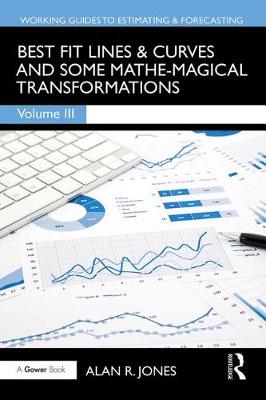Best Fit Lines and Curves, and Some Mathe-Magical Transformations (Volume III of the Working Guides to Estimating & Forecasting series) concentrates on techniques for finding the Best Fit Line or Curve to some historical data allowing us to interpolate or extrapolate the implied relationship that will underpin our prediction. A range of simple 'Moving Measures' are suggested to smooth the underlying trend and quantify the degree of noise or scatter around that trend. The advantages and disadvantages are discussed and a simple way to offset the latent disadvantage of most Moving Measure Techniques is provided.
Simple Linear Regression Analysis, a more formal numerical technique that calculates the line of best fit subject to defined 'goodness of fit' criteria. Microsoft Excel is used to demonstrate how to decide whether the line of best fit is a good fit, or just a solution in search of some data. These principles are then extended to cover multiple cost drivers, and how we can use them to quantify 3-Point Estimates.
With a deft sleight of hand, certain commonly occurring families of non-linear relationships can be transformed mathe-magically into linear formats, allowing us to exploit the powers of Regression Analysis to find the Best Fit Curves. The concludes with an exploration of the ups and downs of seasonal data (Time Series Analysis). Supported by a wealth of figures and tables, this is a valuable resource for estimators, engineers, accountants, project risk specialists as well as students of cost engineering.
- ISBN13 9781351661447
- Publish Date 9 October 2018 (first published 10 September 2018)
- Publish Status Active
- Publish Country GB
- Publisher Taylor & Francis Ltd
- Imprint Routledge
- Format eBook
- Pages 498
- Language English
